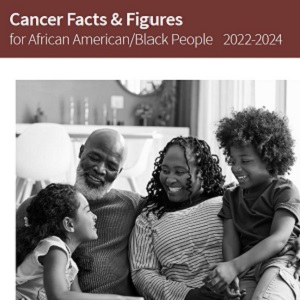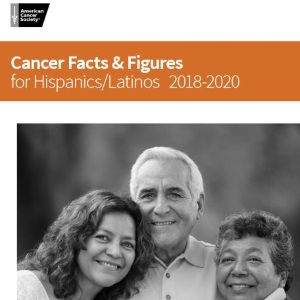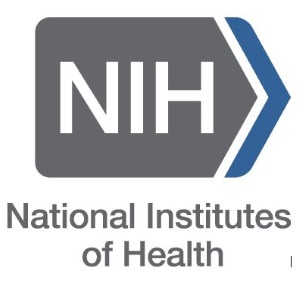Stomach Cancer Disparities
- more likely to be diagnosed with cervical cancer
- more likely to be diagnosed at a later stage of cervical cancer
- less likely to receive optimal treatment
- nearly twice as likely to die of cervical cancer
- more likely to be diagnosed with cervical cancer
- more likely to die of cervical cancer
News
Data

H=Hispanic 8.4, B=Black 7.8,
NA=Native American 7.6, A=Asian/Pacific Islander 7.3, W=White 3.7
Source: National Cancer Institute Cancer
Stat Facts: Stomach Cancer

NA=Native American 13.7, B=Black 13.4,
A=Asian/Pacific Islander 12.8, H=Hispanic 12.3, W=White 7.6
Source: National Cancer Institute Cancer
Stat Facts: Stomach Cancer

A=Asian/Pacific Islander 3.9, NA=Native American 13.9,
H=Hispanic 3.9, B=Black 3.5, W=White 1.5
Source: National Cancer Institute Cancer
Stat Facts: Stomach Cancer

B=Black 7.5, NA=Native American 7.2,
A=Asian/Pacific Islander 6.2, H=Hispanic 6.1, W=White 3.0
Source: National Cancer Institute Cancer
Stat Facts: Stomach Cancer
Women and Men Diagnosed with Stomach Cancer
Kyrzayda Rodriguez

Popular fashion blogger from New Jersey, Kyrzayda Rodriguez died of stomach cancer in September 2018.
It was just one year after being diagnosed with stage 4 cancer and one month after ending her radiation treatments to spend time with her family and friends with as little pain and possible.
K, as she was called, was 40 and was survived by her teenage daughter.
Source: BET
James Baldwin

James Baldwin, the novelist, playwright, poet and essayist who wrote eloquently and bluntly about racial injustice and the Black experience in America, died of stomach cancer in late 1987 at his home in the South of France.
Surrounded by members of his family, he succumbed after a long fight against the cancer that forced the removal of half his stomach earlier in the year.
Source: Los Angeles Times Dec 1, 1987.
Raul Julia

Broadway and movie actor Raul Julia was diagnosed with stomach cancer in 1991 but kept the news private.
He continued to work on stage and in film until he became too ill to continue. He suffered a stroke in October 1994, fell into a coma and died eight days later at the age of 54.
Puerto Rico, where he was born, held a state funeral in San Juan.
Source: Masterworks Broadway
Stomach Cancer Disparities
Incidence
Black men and women. Stomach cancer incidence is about 2 times higher in Black men and women than White men and women. However, higher rates are limited to cancers in the lower stomach, or non-cardia, whereas rates for cardia tumors in the upper stomach near the esophagus are similar by race. From 2009-2018, stomach cancer incidence rates declined more steeply in Black people (2% per year) than in White people (1% per year).
Source: American Cancer Society Cancer Facts & Figures for African American/Black People 2022-2024.
Hispanic men and women. Compared to non-Hispanic Whites, stomach cancer incidence rates in Hispanic individuals are 60% higher in men and more than double in women. From 2009-2018, incidence rates decreased by about 1% to 2% per year in Hispanic men and women and non-Hispanic White men while remaining stable among non-Hispanic White women.
Source: American Cancer Society. Cancer Facts & Figures for Hispanic/Latino People 2021-2023.
Asian/Pacific Islanders. Men were 70 percent more likely than White men to have stomach cancer from 2014-2018 and Asian/Pacific Islander women were twice as likely as White women to have stomach cancer.
Source: U.S. Department of Health and Human Services Office of Minority Health: Cancer and Asian Americans (2021)
Age at Diagnosis
Hispanic men and women. Hispanic men and women appear to have higher risk of stomach cancer before 50 years of age. Incidence rates may be increasing in Hispanic and non-Hispanic White young adults, the causes for which are unclear but may be related to dietary changes and subsequent alterations in the gut microbiome.
Source: American Cancer Society. Cancer Facts & Figures for Hispanic/Latino People 2021-2023.
Helicobacter (H.) pylori infection
Black men and women. Helicobacter (H.) pylori infection, the most important risk factor for stomach cancer, is more than three times more common in Black than White people.
Source: American Cancer Society Cancer Facts & Figures for African American/Black People 2022-2024.
Hispanic men and women. H. pylori infection in the US was about three times higher among Mexican Americans than among non-Hispanic Whites in one population-based study (64% versus 21%, respectively). Higher prevalence among Hispanic Americans largely reflects background rates in countries of origin among foreign-born individuals.
Source: American Cancer Society. Cancer Facts & Figures for Hispanic/Latino People 2021-2023.
Stage at Diagnosis
Black men and women. Nearly 1 in 3 Black stomach cancer patients are diagnosed with distant-stage disease, including 40% for cardia and 30% for non-cardia, for which the 5-year relative survival rate is 5% for both cardia and non-cardia.
Source: American Cancer Society Cancer Facts & Figures for African American/Black People 2022-2024.
Hispanic men and women. Most cases among Hispanic patients are diagnosed at a distant stage, for which 5-year survival is 4%.
Source: American Cancer Society. Cancer Facts & Figures for Hispanic/Latino People 2021-2023.
Treatment
Black men and women. Research suggests that Black patients with stomach cancer are less likely to receive appropriate surgical treatment than White patients.
Source: American Cancer Society Cancer Facts & Figures for African American/Black People 2022-2024.
Five-year survival
Black man and women. Overall, 5-year relative survival for stomach cancer in Black people is 32%, comparable to that in White people. However, 5-year relative survival for non-cardia tumors, which account for more than half (55%) of cases in Black people but only 34% in White people, is 36% in Black people versus 44% in White people. Five-year relative survival rates for cardia tumors, which are less amenable to surgical treatment, are similar in Black and White people (23% verus 24%, respectively).
Source: American Cancer Society Cancer Facts & Figures for African American/Black People 2022-2024.
Hispanic men and women. Five-year stomach cancer survival in Hispanic men and women is 26% and 33%, respectively, slightly lower than that in non-Hispanic Whites (29% and 39%).
Source: American Cancer Society. Cancer Facts & Figures for Hispanic/Latino People 2021-2023.
Mortality
Black men and women. Stomach cancer death rates are more than 2-fold higher in Black than White people, only in part due to higher incidence. The racial disparity in mortality is greater for men than for women. During 2010-2019, stomach cancer death rates declined in Black men and women by 3% per year, similar to declines in White people.
Source: American Cancer Society Cancer Facts & Figures for African American/Black People 2022-2024.
Stomach cancer is one of three cancers in which the death rate for Blacks is twice that of Whites (multiple myeloma and prostate cancer are the other two).
Source: American Association for Cancer Research: Cancer Disparities Progress Report (2020)
Hispanic men and women. Stomach cancer death rates decreased from 2010 to 2019 by 2% per year in Hispanic men and women, compared to declines of 3% per year in non-Hispanic White men and women.
Source: American Cancer Society. Cancer Facts & Figures for Hispanic/Latino People 2021-2023.
Asian/Pacific Islanders. Men are twice as likely to die from stomach cancer as compared to White men, and Asian/Pacific Islander women are 2.5 times as likely to die from stomach cancer, as compared to White women.
Source: U.S. Department of Health and Human Services Office of Minority Health: Cancer and Asian Americans (2021)
Disparities in Stomach Cancer
Regional population-based studies in the United States have identified significant differences in the incidence of gastric cancer based on race/ethnicity.
A retrospective cohort study from 2008 to 2014 in Southern California demonstrated that Asians, Hispanics, and non-Hispanic black populations were found to have up to 50% increased risk for gastric cancer compared with the non-Hispanic white population.
Consistent with these findings, a retrospective study examining over 55 000 gastric cancer cases from the National Cancer Institute’s cancer registry from 1992 to 2009 found overall gastric cancer incidence rate among Asians, Blacks, and Hispanics is more than double the rate among non-Hispanic whites in the United States.
Source: “Advances in screening and detection of gastric cancer” by Jonathan Y. Xia and A. Aziz Aadam (2022)
Asians and Stomach Cancer

K=Korean 49.0, V=Vietnamese 23.9, SE=Southeast Asian 21,1, J=Japanese 19.2, C=Vhinese 17.6, SA=South Asian 7.75, F=Filipino 6.69, W=White 3.70
Source: “Population-based Analysis of Differences in Gastric Cancer Incidence Among Races and Ethnicities in Individuals Age 50 Years and Older” (2020)
"In the United States, the burden of gastric cancer falls disproportionately on ethnic minorities and immigrant communities, especially Asians."

The Stanford University Center for Asian Health Research and Education (CARE) and the Stanford Division of Gastroenterology and Hepatology hosted an inaugural Gastric Cancer Summit in 2020 at Stanford with the goal of creating a roadmap to address the prevention, early detection, and treatment of gastric cancer.
“The under-recognition of gastric cancer risk among minority communities may be one of the most significant unaddressed healthcare disparities in the United State,” declared the Summit organizers.
Latino Patients Have Higher Rate of Gastric Cancer Diagnosis, Survival

In Los Angeles County, Cedars-Sinai physicians noticed a lot of Latino patients in their 30s and 40s showing up with very aggressive stomach cancer despite being otherwise healthy. This was especially perplexing since gastric cancer tends to affect an older population.
The team, led by Miguel Burch, MD (above), chief of Minimally Invasive and GI Surgery, decided to dig deeper. They found that the incidence of gastric cancer in Latino patients was increasing about 10 times faster than in White patients.
They also found that the Latino patients diagnosed with gastric cancer were more likely to be younger, more likely to be female and were technically healthier with fewer medical comorbidities. And compared to other populations, Latino patients had more aggressive features of the disease and tended to come from areas of lower income and education status.
Despite all this, Latino patients had improved survival rates when compared to other populations.
“We found that being Latino was more important in predicting survival than even receiving chemotherapy and as important as receiving treatment in a high-volume medical center,” said Burch.
“Given the improved survival seen specifically in Latinos even with advanced disease, it raises the question if Latino patients should be screened early and aggressively.”
Source: “Latino Patients Have Higher Rate of Gastric Cancer Diagnosis, Survival” on the Cedars-Sinai website (Jan 24, 2022)
Voices about Stomach Cancer
About Stomach Cancer
Find out all about stomach cancer, including risk factors, symptoms, how it is found, and how it is treated.
Statistics, risk factors, symptoms and signs, diagnosis, stages, treatment, latest research, clinical trials.
Learn more about gastric cancer prevention, screening, treatment, statistics, research, and clinical trials.
Stomach Cancer Screening?
NO

No major medical organizations in the United States recommend routine screening for stomach cancer in people at average risk. This is largely because this disease isn’t common in the U.S., so the benefits of screening most likely would not outweigh the possible harms (such as needing additional tests or procedures, even in some people who might not end up having stomach cancer).
Because routine screening for stomach cancer is not done in the United States, most people are not diagnosed with stomach cancer until they have certain signs and symptoms that point to the need for medical tests.
The benefits of screening might outweigh the risks in some people who are at increased risk for stomach cancer because they have certain risk factors (for example, certain potentially pre-cancerous stomach conditions or inherited conditions such as Lynch syndrome or familial adenomatous polyposis [FAP]). For example, upper endoscopy might be recommended at regular intervals in these people.
Source: American Cancer Society: Can Stomach Cancer Be Found Early?
YES

The American Society of Gastrointestinal Endoscopy has recommended consideration of gastric cancer screening with upper endoscopy among new US immigrants older than 40 years from high-risk endemic regions including Japan, Korea, China, Russia, and South America.
However, it did not recommend screening of other high-risk races and ethnicities in the United States, specifically Hispanics and non-Hispanic blacks.
Hopefully, the identification of racial and ethnic differences of gastric cancer incidence in the United States will stimulate efforts to address these differences through implementation of targeted screening in high-risk populations.
Source: “Advances in screening and detection of gastric cancer” by Jonathan Y. Xia (above) and A. Aziz Aadam (2022)

“There is a critical need to assess screening and prevention strategies for stomach cancer that make sense, particularly for minority communities bearing much of the disease burden,” says Chin Hur, MD, of Columbia University.
“In countries like Korea and Japan there are national screening guidelines, partially because their rates of stomach cancer are so much higher than in the U.S. But if you look at groups of higher risk individuals in the U.S., those people could benefit from regular screenings,” says Chin Hur, MD, of Columbia University.
Hur, who specializes in cancer screening and prevention for gastrointestinal cancers and directs the Columbia Stomach Cancer Screening Center, hopes to bring about change in gastric cancer prevention and screening guidelines.
Source: “Tackling Disparities in Stomach Cancer” on the Columbia University Cancer Center website (2021)
Precision Medicine

Precision medicine is a way health care providers can offer specific care for their patients, based on the particular genes, proteins, and other substances in a person’s body. Health care providers might talk about genetic, genomic, DNA, or molecular testing. Or they might talk about checking for biomarkers or getting a genetic profile. These are ways they might use a precision medicine approach when planning a patient’s care.
For certain cancers, precision medicine is used to help know what treatment are best. The two types of treatment most often used in precision medicine are targeted drug therapy (drugs designed to attack a specific target on cancer cells) and immunotherapy (medicines used to help the body’s immune system attack the cancer).
Source: “Precision or Personalized Medicine” (American Cancer Society)
Stomach Cancer Support Groups
“I created this Facebook Cervical Cancer Support Group as a support community for those effected by Cervical Cancer. You may be the patient, or the loved one of a cervical cancer patient. Here you can meet others battling this terrible disease, share stories, etc. This is a place where patients and survivors come together to support one and other.”
“Cervivor is a community, a learning tool, an advocacy resource, and an online retreat for healing, connecting and thriving. While everyone experiences cervical cancer as an individual, we want to help survivors bring their collective wisdom together to create a community of advocates.”
The mission of the National Cervical Cancer Coalition is “to help women, family members and caregivers battle the personal issues related to cervical cancer and HPV and to advocate for cervical health in all women by promoting prevention through education about early vaccination, Pap testing and HPV testing when recommended.”
Active Stomach Cancer Facebook Pages
Free Downloads

“If You Have Cervical Cancer”
A short, simple guide to cervical cancer from the American Cancer Society.
Free download here

A 2-page introduction to cervical cancer from the American Society of Clinical Oncology.
Free download here

Two-page fact sheet about cervical cancer from the Centers for Disease Control and Prevention (CDC)
Free download here

National Comprehensive Cancer Network Guidelines for Patients are developed by
the National Comprehensive Cancer Network, an alliance of leading cancer centers across the United States devoted to patient care, research, and education. The Guidelines present information in an easy-to-learn format for people with cancer and those who support them and explain the cancer care options likely to have the best results.
Free download here
Publications

American Cancer Society. American Cancer Society. Cancer Facts & Figures for African American/Black People 2022-2024.

American Association for Cancer Research: Cancer Disparities Research Report 2020

American Cancer Society. Cancer Facts & Figures for Hispanics/Latinos 2018-2020. Atlanta: American Cancer Society, 2018













